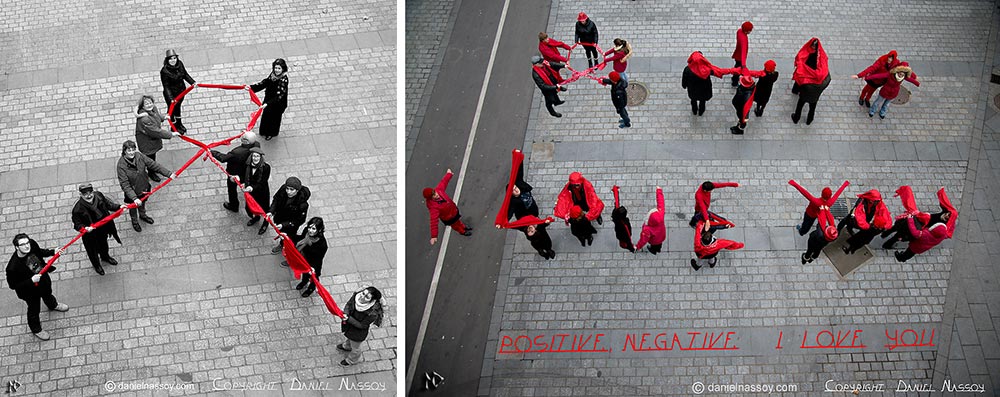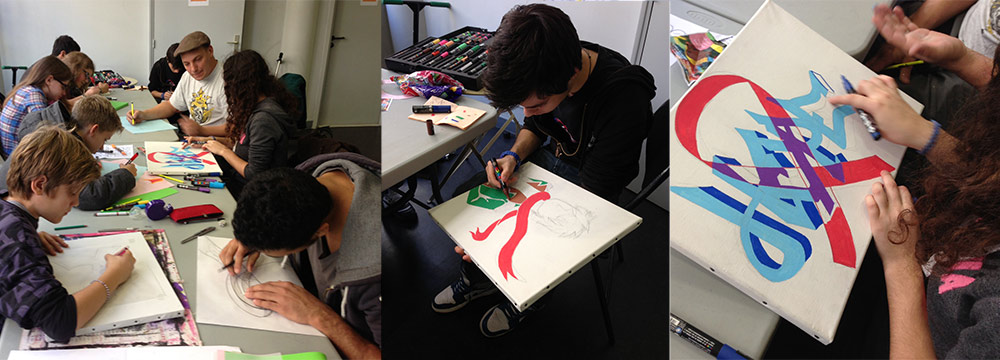On the occasion of the World Day against AIDS, December 1, 2013, The CLAJE, a cultural youth center in Paris and the association Designing Hope present an exhibition on the theme of the red ribbon and on the message “I Love You Positive or Negative”.
A RIBBON AND A MESSAGE
This exhibition is part of “Les Solidarités” program of CLAJE, a cultural entertainment center for youth in Reuilly (Paris 12e).
This exhibition revolves around the red ribbon, symbol of the fight against AIDS, and the message “I love You Positive or Negative”, message of solidarity and anti-discrimination for people with HIV.
This exhibition brings together artists from “Artistes à la Bastille”, artisans and creators of the Viaduc des Arts, as well as young people and users of the center.
Daniel Nassoy, a photographer and member of Artists at the Bastille, organized a photo session on the theme of the ribbon with the users of the CLAJE, the Reuilly Animation Center (Paris 12), to create the two visuals below, one Ribbon and the other forming the message “Positive or negative, I love you”.

WORKSHOP WITH THE YOUTH AT CLAJE
The young people of CLAJE worked on the theme of the ribbon with the animators of the center and made 15 ribbons from 4 workshops: Graff, Mosaic, Couture, modeling.

CONTRIBUTIONS OF ARTISTS TO THE BASTILLE
Also exhibited are works by the artists of the Collective Artists at the Bastille, having worked on the theme of the ribbon. The works of Clea Vignando, Nicole Lantier, Daniel Nassoy, Christian Rouchouse, Nelson Ricart Guerrero, Jean-Charles Troutot, Gabor Breznay and Laure Boyer are exhibited.

ARTISANS AND CREATORS OF THE VIADUC DES ARTS
Ribbons made by the craftsmen and creators of the viaduc des Arts were also exhibited, following a work previously exhibited under the Viaduc des Arts, near the center. Each artisan and creator of the Viaduc des Arts had imagined and realized a ribbon in his material of predilection.

DIFFUSION OF CONDOMS
Condoms packaged in original packaging made with the support of the City of Paris, and containing the visuals of the exposed ribbons, were also available in the center, as well as in 50 selected establishments (bars restaurants, cafés) from the neighborhood during the exhibition.
